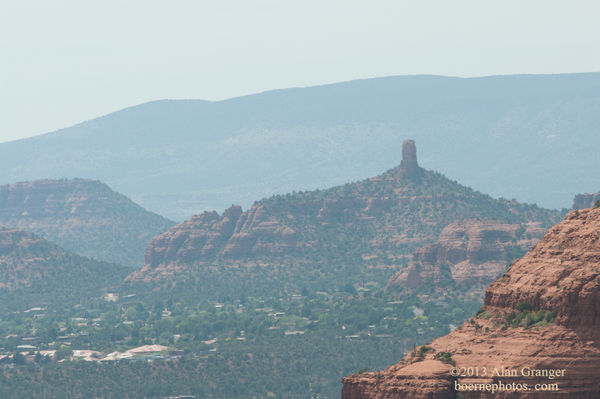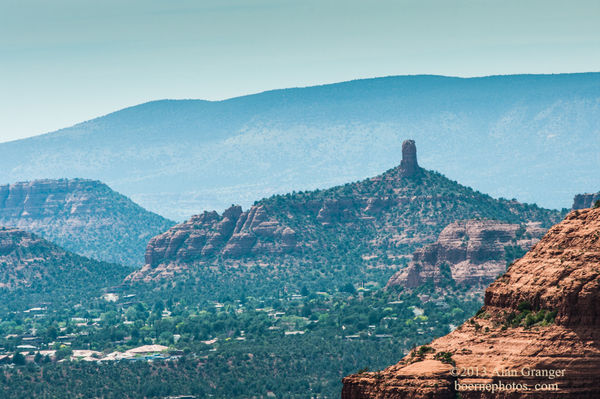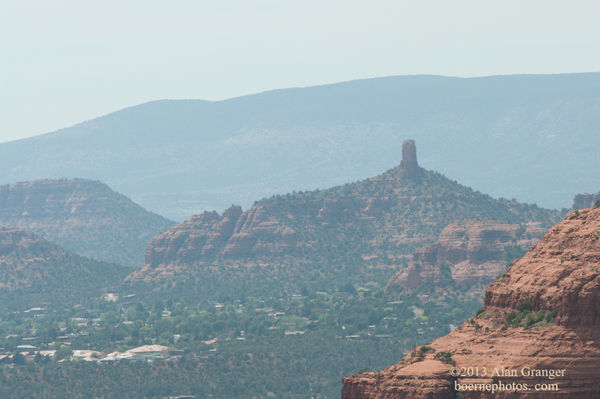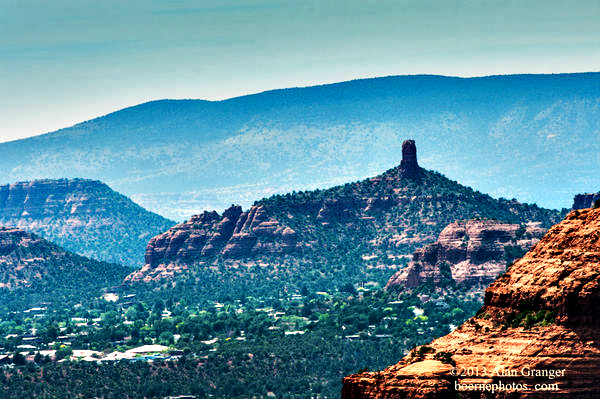How to deal with haze
Jun 28, 2013 10:57:32 #
We just returned from a week's photo drive in The national parks of Southern Utah. Although we have decent cameras (Panasonic FZ150 and Canon G-15), many of our landscape photos were spoiled by haze. The haze was invisible to the naked eye! Nor did time of day seem to matter...
Questions: How do others cope with haze? Filters? (There is no provision for a filter on our G-15). Can RAW photography be dealt with for haze in post processing? How? Lastly, can one predict in advance whether haze will be present? What in the weather forecast would give a photographer something to go on?
Questions: How do others cope with haze? Filters? (There is no provision for a filter on our G-15). Can RAW photography be dealt with for haze in post processing? How? Lastly, can one predict in advance whether haze will be present? What in the weather forecast would give a photographer something to go on?
Jun 28, 2013 10:59:38 #
Please post the "ruined" photos. Also google atmostpheric perspective.
Jun 28, 2013 11:08:59 #
On a recent Grand Canyon trip it was hazy and I missed both sunrise and sunset. I took each shot with three exposures, -1, 0,+1. I ran them through Nik HDR Efex Pro 2 and added slight "tone mapping" to compensate for the bad light and haze. My camera did the bracketing automatically and HDR Efex processing took about a minute each.
I made a slideshow video, most of which are the stills with a little pan and zoom applied. The colors are probably no longer scientifically accurate, but to me, they look like what my brain saw through my eyes that day.
Hope you enjoy it: http://vimeo.com/64474485
Bill
I made a slideshow video, most of which are the stills with a little pan and zoom applied. The colors are probably no longer scientifically accurate, but to me, they look like what my brain saw through my eyes that day.
Hope you enjoy it: http://vimeo.com/64474485
Bill
Check out Traditional Street and Architectural Photography section of our forum.
Jun 28, 2013 11:46:20 #
Wind in the Southwest can be your greatest enemy, putting very fine dust in the air and if the wind is right and agricultural burning is being done in Mexico, smoke. We went to The GC and Sedona in May. It was hazy. I used a circular polarizing filter. I helps some. A UV filter is no help. All modern lenses have coatings to block UV.
I ran the pics through LR5, increasing the contrast out of sight and also the clarity and added a graduated filter effect to it too. Not very satisfactory. But here they are.
I ran the pics through LR5, increasing the contrast out of sight and also the clarity and added a graduated filter effect to it too. Not very satisfactory. But here they are.


Jun 28, 2013 14:07:32 #
Jun 28, 2013 14:26:40 #
for Alandg46
The second photo is considerably improved of the first. I am inspired to do likewise.
Did you shoot in RAW or in JPEG?
David
The second photo is considerably improved of the first. I am inspired to do likewise.
Did you shoot in RAW or in JPEG?
David
Jun 28, 2013 14:28:08 #
drkeene wrote:
We just returned from a week's photo drive in The ... (show quote)
A podcast/blogger I watch has just this as one of his recent topics.
http://www.phototips.biz/2013/02/episode-164-removing-haze-using.html
Check out Commercial and Industrial Photography section of our forum.
Jun 28, 2013 14:31:01 #
JR1 wrote:
Use a UV filter
:thumbup: :thumbup: :thumbup:
There's always a way to fit a filter over a lens.
http://www.bhphotovideo.com/c/product/894777-REG/Canon_6925b001_Filter_Adapter_For_G15.html
Jun 28, 2013 15:31:23 #
drkeene wrote:
for Alandg46
The second photo is considerably improved of the first. I am inspired to do likewise.
Did you shoot in RAW or in JPEG?
David
The second photo is considerably improved of the first. I am inspired to do likewise.
Did you shoot in RAW or in JPEG?
David
I shoot raw only. When you run into stuff like that, there isn't enough headroom to work with jpg's.
Jun 28, 2013 15:33:20 #
I duct taped a 77mm ND filter on a 49mm lens once. Actually it was two screwed together.
Jun 28, 2013 22:52:52 #
JR1 wrote:
Use a UV filter
Film needed a UV filter. Digital does not. They still exist to keep the (expensive) lens clean.
Check out Sports Photography section of our forum.
Jun 29, 2013 06:02:07 #
1. Image>adjustments>Levels
Adjust gamma
2. Brightness/contrast
Brightness +39
Contrast +36
3. Unsharp mask
amount 15
radius 60
Threshold 0
4. Save (all in photoshop)
Adjust gamma
2. Brightness/contrast
Brightness +39
Contrast +36
3. Unsharp mask
amount 15
radius 60
Threshold 0
4. Save (all in photoshop)
Your Original

My retouch

Jun 29, 2013 06:28:43 #
Jun 29, 2013 06:48:03 #
Wall-E wrote:
:thumbup: :thumbup: :thumbup:
There's always a way to fit a filter over a lens.
http://www.bhphotovideo.com/c/product/894777-REG/Canon_6925b001_Filter_Adapter_For_G15.html
There's always a way to fit a filter over a lens.
http://www.bhphotovideo.com/c/product/894777-REG/Canon_6925b001_Filter_Adapter_For_G15.html
This from Commercial Photographer Kirk Tuck, working out of Austin, Texas:
I've experimented many times over the last few decades and I've proven to myself that filters in front of lenses degrade the quality of the final images. Here's how I understand it all: Every air to glass interface causes a slight loss of resolution and contrast. This tends to make a lens look "flatter" and less sharp than it could be. Lens designers have understood for over a century that adding more glass elements increases the compromise. In the 1940's and 1950's they were willing to compromise things like corner sharpness and flatness of field so that they could design lenses with fewer corrective optics that had much more "snap" and "sparkle" than lenses of equivalent focal length designed with more elements.
Everything in lens design and manufacture is a compromise. If you add more elements you can correct for more distortions but you inevitably compromise contrast or resolution. And contrast/resolution is an equation. You can have one or the other or a mix but not high apparent acutance and high resolution in the same design. Really. Macro lenses need to have flatter fields and greater correction of geometric distortion. They have more elements. But in order to keep the image quality very high they have slower f-stops and smaller elements. Smaller lens elements are easier to machine with high accuracy than larger elements. They are easier to correctly assemble in barrels. Faster lenses have bigger elements. According to optics expert, Erwin Puts, every time you double the diameter of an optical glass element you increase the manufacturing complexity by something like a factor of 8X.
The idea behind the desire to use a filter is to protect the front element of the lens. In days of old, when people would sit around on their davenports and immerse themselves in the latest novels of Nabokov and Kerouac while sipping cognac, the coatings and the glass used on lenses was......soft. Rigorous and frequent cleaning degraded the coatings and could scratch the front surface of the glass which led to flare and other nasty optical business.
But lenses have been hardcoated for years and years (five decades?). And the infinitely expensive fast telephoto lenses from Nikon, Canon and Leica are designed with a neutral front element that is, essentially a built in protective filter. The difference being that the systems were designed with that component as an integral part. Not an after thought that's only benefit is to increase the commission of your camera sales person or to increase the margin on your internet purchase.
Take the filters off the lenses. Shoot like a real man. Or a real woman. And if your lens is destroyed then make sure you have a good story to go along with the loss. That's the way it's done.
Jun 29, 2013 08:27:43 #
(There is no provision for a filter on our G-15)
For my G-7 I was able to buy an adapter to use 58mm filters, lens hood etc.
It did obscure part of the viewfinder requiring the use of the screen , using screen required pop up screen shade, worked but kind of defeated the purpose of a pocket camera, made it look like a small bridge,
Bob.
For my G-7 I was able to buy an adapter to use 58mm filters, lens hood etc.
It did obscure part of the viewfinder requiring the use of the screen , using screen required pop up screen shade, worked but kind of defeated the purpose of a pocket camera, made it look like a small bridge,
Bob.
If you want to reply, then register here. Registration is free and your account is created instantly, so you can post right away.
Check out Traditional Street and Architectural Photography section of our forum.








